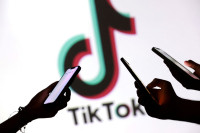Science & Technology
Sony Xperia: Technologically impressive but narrow market
Despite Sony smartphones’ innovative features, they’ve struggled to stay relevant in the highly competitive smartphone market.
Prajesh SJB Rana
The smartphone landscape has changed exponentially since the 2000s and many of the market leaders of the dumb phone era such as Nokia, Sony Ericsson and Motorola are husks of their former selves losing major market share to companies like Samsung, Apple and Chinese upstarts like Xiaomi and OnePlus.
During the 2000, Sony Ericsson mobile phones were all the rage due to the company’s focus on multimedia and innovative designs. Phones like the Walkman phones delivered expectational audio quality for the time, with some popular models featuring up-to four speakers. The company was also known for their innovations in smartphone camera systems with many non-Sony phones, even today, equipped with Sony’s smartphone sensors. Sony Ericsson was also one of the first smartphone companies to embrace the Android ecosystem where the likes of Nokia and Blackberry resisted the mobile operating system for a long time.
In 2010, Sony bought out Ericsson’s share in the company and rebranded the company as Sony Mobile and since then we’ve seen some great devices from the company that have continued to push the smartphone industry further.
The Xperia line of phones were one of the first few phones that had an IP rating with waterproofing and Sony smartphones have always offered exceptional audio quality through their implementation of HiRes Audio since their 2015 Xperia Z5 flagship. The Xperia line has also incorporated many of Sony’s display technologies as well with the Bravia Engine augmenting their smartphone displays since 2012.
But even with all of these innovations behind Sony smartphones, they’ve struggled to stay relevant in the smartphone market, with Sony’s smartphone sales dropping from 11.9 million in 2014 to a mere 0.6 million in Q3 2020. An embarrassing number to say the least since many other manufacturers like Apple and Samsung achieve those numbers in a few weeks after launch.
Sony’s flagship phones have always been impressive. They offer good specifications and I am a fan of their utilitarian, no-nonsense business look. Sony flagships have also offered some really high density displays for a very long time. In 2019, the company revamped their Xperia line of phones with an easier naming scheme. This rebrand started with the Xperia 1 in 2019 and continued with the Xperia 1 II in 2020. Sony also offers smaller and cheaper versions of their phones although they are very premium priced devices.
Both the Xperia 1 and the 1 II are some seriously impressive devices. The Xperia 1 II uniquely offers a very tall aspect ratio at 21:9. The tall nature of the phone while fitting more comfortably in your hand, also offers larger screen real estate while using the phone. The screen is also one of the very few smartphones with a 4k OLED HDR display. It comes equipped with a top-of-the line Snapdragon 865 SOC with 256GB of storage and either 8 or 12 GB of RAM. While the horsepower under the phone is flagship level, Sony has also done some interesting things with their camera module. The Xperia 1 II is equipped with a quad camera setup at the back with three 12 MP sensors at wide (24mm), telephoto (70mm), and ultrawide (16mm) and a 0.3 MP depth sensor all equipped with Zeiss optics.
Sony also released their Sony A7S III last year, their full-frame mirrorless camera that has been arguably considered one of the best cameras to come out in 2020. For the Xperia 1 series, Sony has managed to port the A7S’ system into the smartphone so you get almost all of the software features of the A series cameras through Sony’s Pro apps—Photo Pro and Cinema Pro.
These apps not only provide granular control over your camera settings but also come with advanced features like focus tracking, object and eye tracking, histograms, metering modes to mention a few. Even in the Cinema app, the Xperia shoots at 4k videos with wide dynamic range with support for colour profiles, audio tracking and manual focus tracking too.
Considering everything on paper, the Xperia 1 II is an exceptional device but this year, Sony launched the Xperia Pro, an even more professional device with the capabilities of using the smartphone’s 4K HDR screen as a monitor for the A7S or other professional camera setups while also providing cutting-edge 5G technology to enable live-streaming from the phone and camera setup itself. The phone also has a 4,000 mAh battery and can reverse charge the camera as well. Unsurprisingly, this monster of a professional phone goes for $2500.
Which brings us back to Sony's declining market share. The revamped Xperia phones are really good to say the least, but with the refresh it feels like Sony just slapped a fresh new coat of paint on their already exclusive products. While the new phones are seriously impressive, they’re designed for a very niche market of professionals who, in many cases, already have professional gear that they would prefer over the Xperia. And while yes, having a multi-purpose device that you can depend on for professional work does add to the appeal of the devices, they cater to a very small segment of the market. Sony phones are also expensive, with the Xperia 1 II running for over $1000.
Considering Sony’s focus on professional tools, it was surprising to see how normal non-pro users are neglected in the feature set. Basic smartphone functionality like Night mode is missing on the Camera app, meaning that users of the device will have to go into the Pro app and fix settings manually for a decent low-light photo. Even the front-facing selfie camera is an unceremonious 8 MP sensor with very little bells and whistles. Non-pro features such as these would be far more important for regular smartphone customers than external monitor support and full creative freedom during normal photo shoots or selfies.
The new Sony smartphones are really impressive technologically, but in a sense, it feels like the company is further drawing themselves into a corner by focusing solely on a very small and niche segment of the market. But even if you are a creative professional, the Xperia phones are difficult to recommend since as a professional, the phone would definitely come in handy from time-to-time but in many cases, you have dedicated equipment that will overshadow the Xperia. Even though the company is losing market share, they haven’t stopped innovating and pushing the industry forward.




 17.12°C Kathmandu
17.12°C Kathmandu








%20(1).jpg&w=300&height=200)

